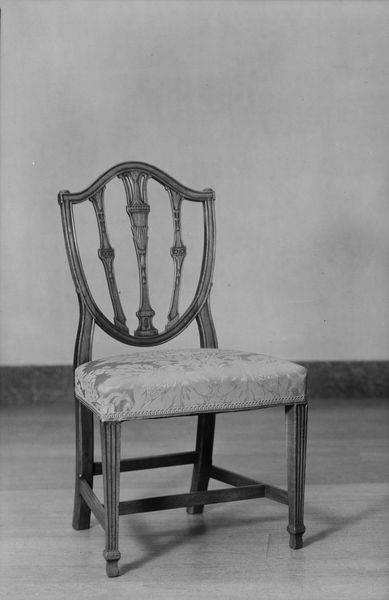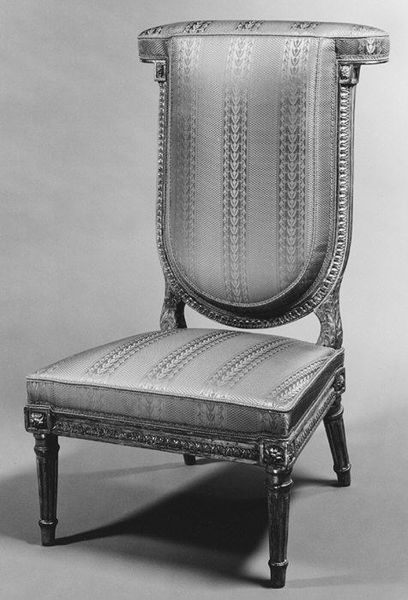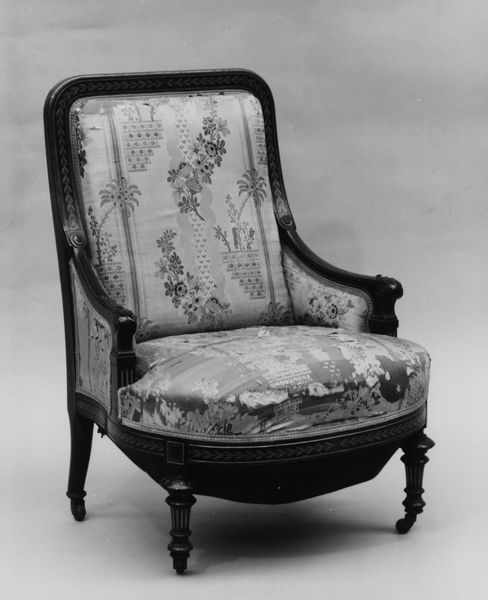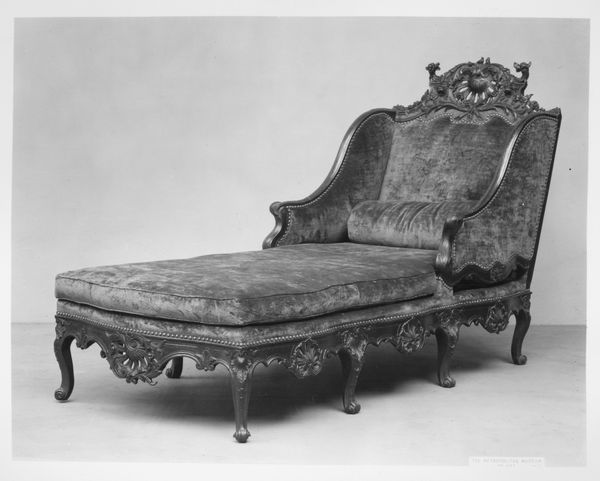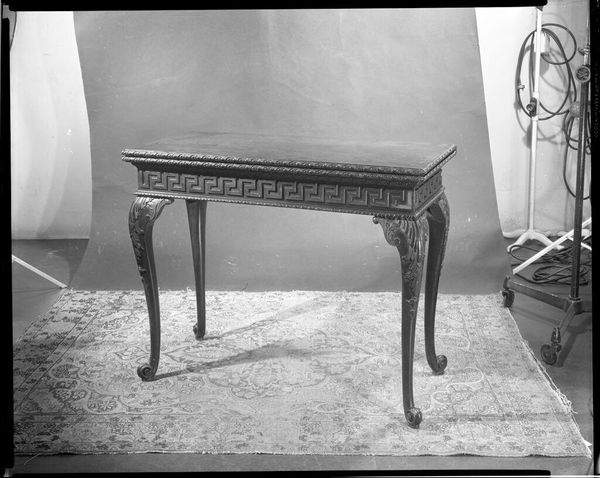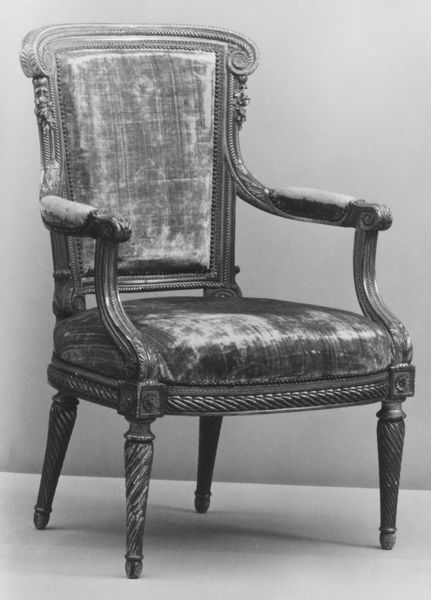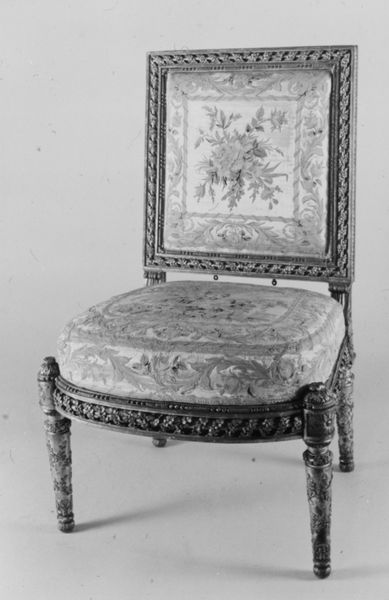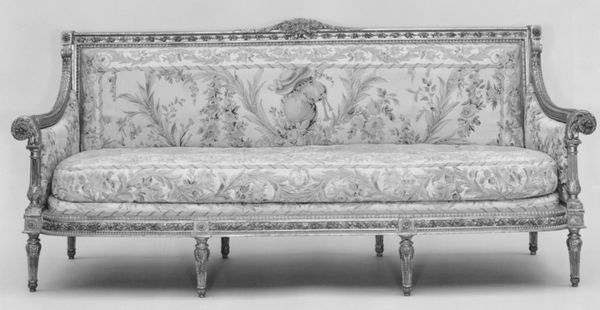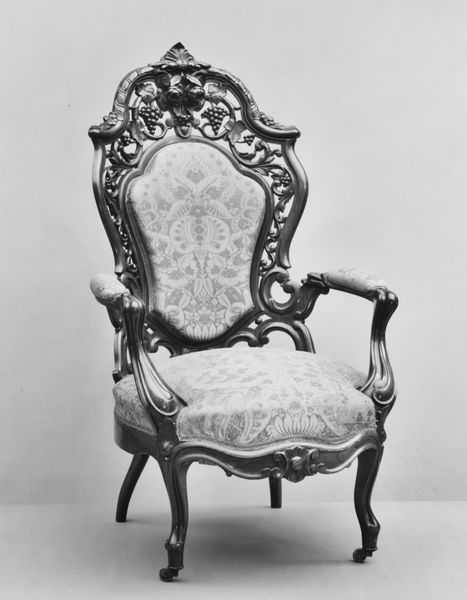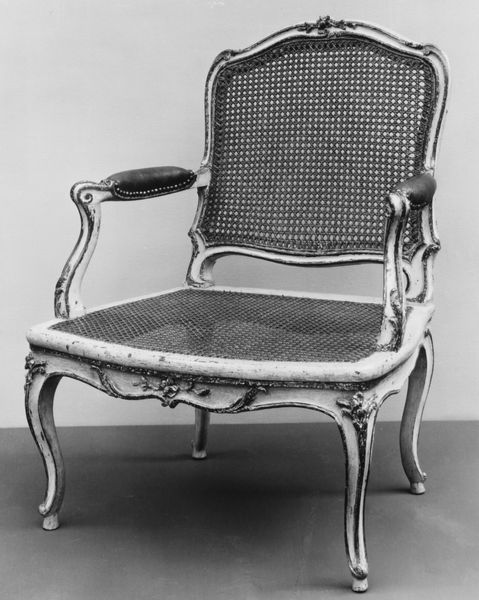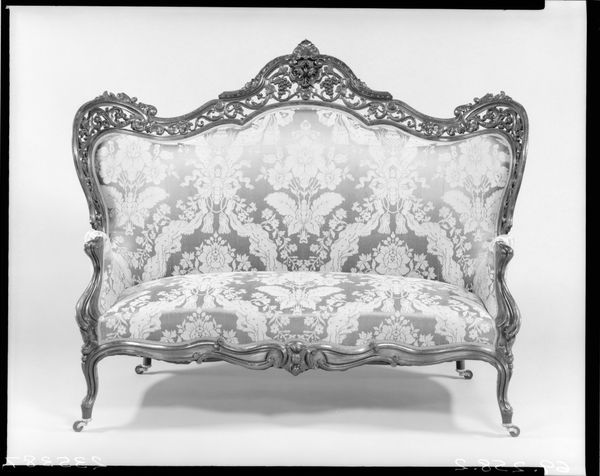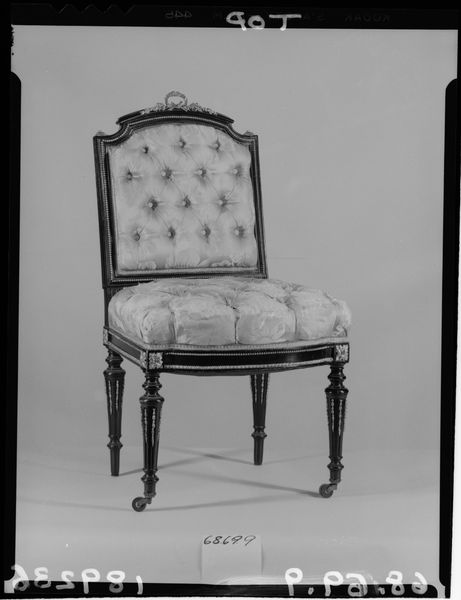
sculpture, wood
#
neoclacissism
#
sculpture
#
furniture
#
sculpture
#
monochrome photography
#
wood
#
decorative-art
#
monochrome
Dimensions: Overall: 55 3/4 × 59 1/4 × 88 in. (141.6 × 150.5 × 223.5 cm)
Copyright: Public Domain
Curator: This elegant piece is a daybed crafted between 1775 and 1790 by Georges Jacob, a prominent figure in Parisian furniture making. Editor: The immediate impression is one of remarkable restraint—it is so rectangular and flat, as if all the usual curves of domestic life have been planed away! Curator: Well, that very rectilinearity speaks volumes about the Neoclassical movement’s impact. Inspired by ancient Greece and Rome, there was a desire to strip away the frivolous ornamentation of the Rococo era. This daybed embodies those ideals of order and reason, particularly within elite circles. Editor: I do see that classicism in the fluted legs and restrained floral carvings. However, the brocade upholstery—visible on both the head and footboards—injects a softness and subtle luxury, playing beautifully against the dark, polished wood frame. The repetition of this pattern creates balance, something important for furniture pieces. Curator: And balance was crucial. Furnishings like this were potent symbols of status. Jacob’s clientele included members of the French court, for whom possessing furniture reflecting both wealth and enlightened taste was critical to navigating social hierarchies. Consider the political messaging such items conveyed. Editor: The scale is interesting; it's more intimate than I initially thought. Given its function as a place for repose, the artist’s selection of materials plays an understated role. The polish on the dark wood, the smooth fabric—it’s a composition meant for quiet contemplation and social decorum, both at arm's reach. Curator: Indeed, this daybed wasn't just about rest; it was a stage for social interaction. Imagine reclining here, receiving guests, engaging in witty repartee. Furniture acted as a backdrop for performing one's social role. Editor: Observing this piece allows for an acute study of harmony and function as distinct concepts; here, both concepts work together effortlessly. It will definitely prompt a second viewing. Curator: Precisely, analyzing furniture such as this reveals the complexities of art's social history; the story behind it enhances our own understanding of aesthetics.
Comments
No comments
Be the first to comment and join the conversation on the ultimate creative platform.

